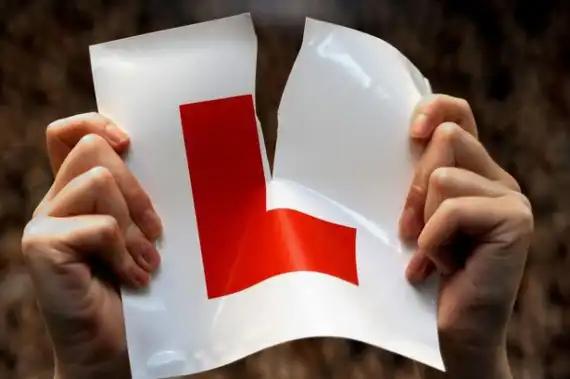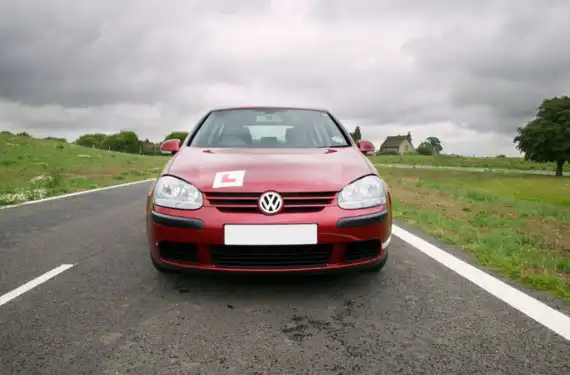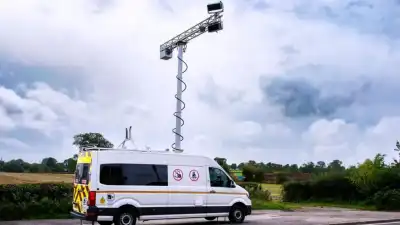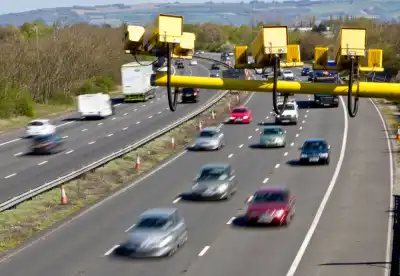
Theory test launched to improve road safety
The UK theory test launched 20 years ago to make motoring safer then evolved beyond recognition, The Driver & Vehicle Standards Agency explained. Its purpose is to confirm that candidates understand the: rules of the road, signage, hazards, basics of vehicle safety and documentation. It also assesses driver attitude.
Prior to its launch, candidates answered a brief series of theory-style questions at the end of the practical test. Examiners revealed a picture of a road sign then asked what it meant, for example. On this basis, there was only a brief, cursory, assessment of such theoretical knowledge and that was considered insufficient.
In July 1996, the theory test replaced oral questions but had a basic form by current standards. Candidates received a paper test that incorporated a series of multiple choice questions. The pass rate was 26 out of 35 - rising to 30 out of 35 - from October 1996.

From January 2000, candidates sat the theory test via a computer-based, touch-screen, interface rather than pen and paper. The benefit, of course, was that computers instantly calculated pass/fail scores which saved time, effort and money. In 2002, the theory test evolved further to include a hazard perception element.
Candidates were shown video clips from the perspective of a travelling vehicle. The task was to click a mouse button when developing hazards required a response such as braking. Such testing reduced “non-low-speed accidents” for newbies during their first year on the road, The Driver & Vehicle Standards Agency said.
Let us consider an example. Ahead of the vehicle, candidates saw a cyclist approach a lorry parked on the left. The cyclist looked over his shoulder, so it was fair to assume he planned to move to the centre of the road – in front of the candidates' car – to pass.
In September 2007, the number of theory questions rose from 35, to 50. The pass rate increased to 43. Further, in January 2015, hazard perception video footage was replaced with computer generated imagery (CGI) which included more modern vehicles and surroundings.

The Driver & Vehicle Standards Agency said it plans to create further, hazard perception, clips that include vulnerable road users such as children, cyclists and motorcyclists. Computer generated images facilitate this process as – in contrast to filming – there is no need to put people into dangerous situations.
Government “determined” to improve road safety
Transport Minister, Lord Ahmad, stressed that the theory test remains a valuable tool which makes roads safer.
He said: “We are determined to deliver safer roads and cut the number of people who are killed and seriously injured. The theory test is an important check so that new drivers know the rules of the roads and they can spot potential hazards before they develop.”
Theory test pass rate and highest number of fails
The theory test pass rate for car drivers in 2015/16 was 49.3%. However, there were recent cases of learners failing on an extreme number of occasions. The most prolific was a 30 year old woman from Ilford in north-east London, who failed her 113th test (in 2014/15).
This candidate was followed by a: 40 year old gentleman from Ilford in north-east London, (107 fails by 2016/17), 30 year old man from Peterborough (86 fails by 2014/15), and a 28 year old man from Wales (73 fails by 2016/17). In contrast, a 41 year old man from Birmingham passed the theory test on his 80th attempt, in 2012/2013.
Driving Instructors Association concerned about safety
Olivia Baldock-Ward, Training Manager at the Driving Instructors Association, is concerned. She argued: "There is the issue of whether people who are failing the theory test 100 times should be allowed to try again and again. There is an issue of road safety here.”

She added: "On average, people might need 2 or 3 goes at passing the tests. If it is much more than that, then there may be other issues involved. Driving is a serious matter. People do die on the roads.”
Man passes practical driving test on 39th attempt
A handful of learners endured an extreme struggle with the practical driving test too. Since 2011, the most prolific was a 38 year old Liverpudlian man who passed on his 39th attempt, during 2015/16. At current rates, he paid £62 or £75 per-test depending on the time of the week. The total cost was between £2,418 and £2,925.
A 44 year old female from Sutton Coldfield was the second most persistent. She – along with a 44 year old male from Weston Super-Mare – required 36 attempts to pass the practical test. These learners reached the standard in 2012/13 and 2014/15, respectively.
Others continue to struggle, however. In 2015/16, a 52 year old female from Essex failed her 30th practical, and a 51 year old male followed suit in the same financial year. The following table confirms the gender, location, and age of the motorists that attempted the most practical driving tests in England (since 2011).
| Rank | Attempts | Age | Gender | Test Centre | Year | Pass/Fail |
| 1 | 39 | 38 | Male | Garston (Liverpool) | 2015/16 | Pass |
| 2 | 36 | 44 | Female | Sutton Coldfield | 2012/13 | Pass |
| 2 | 36 | 44 | Male | Weston-super-Mare | 2014/15 | Pass |
| 3 | 35 | 24 | Female | Middlesbrough | 2010/11 | Pass |
| 4 | 34 | 49 | Female | Middlesbrough | 2010/11 | Pass |
| 4 | 34 | 36 | Female | Heckmondwike (W Yorks) | 2011/12 | Pass |
| 5 | 33 | 49 | Male | Hendon (London) | 2012/13 | Pass |
| 5 | 33 | 36 | Female | Enfield (London) | 2012/13 | Pass |
| 6 | 32 | 52 | Male | Goodmayes (London) | 2015/16 | Fail |
| 6 | 32 | 51 | Female | Horsforth (W Yorks) | 2011/12 | Fail |
| 6 | 32 | 48 | Female | Heckmondwike (W Yorks) | 2011/12 | Pass |
| 6 | 32 | 42 | Female | Heckmondwike (W Yorks) | 2012/13 | Pass |
| 6 | 32 | 31 | Male | Barking (London) | 2015/16 | Pass |
| 7 | 31 | 63 | Female | Blackburn with Darwen | 2015/16 | Pass |
| 7 | 31 | 48 | Male | Goodmayes (London) | 2015/16 | Pass |
| 7 | 31 | 44 | Male | Garretts Green (Birmingham) | 2014/15 | Pass |
| 8 | 30 | 52 | Female | Basildon (Essex) | 2015/16 | Fail |
| 8 | 30 | 35 | Female | Heckmondwike (W Yorks) | 2011/12 | Pass |
| 8 | 30 | 35 | Male | Garston (Liverpool) | 2014/15 | Pass |
| 8 | 30 | 41 | Male | Heaton (Bradford) | 2012/13 | Pass |
| 8 | 30 | 51 | Male | Leicester | 2015/16 | Fail |
| 8 | 30 | 36 | Female | Kingstanding (Birmingham) | 2015/16 | Pass |




